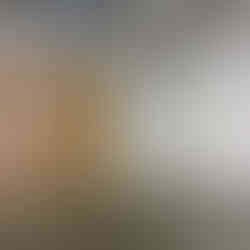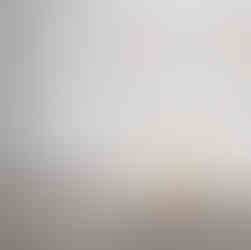Ree Morton at ICA LA
- artandcakela
- May 6, 2020
- 4 min read
Updated: Jan 15

Bozeman, Montana, 1974 Enamel, flocking, and glitter on celastic; wood; colored light bulbs Approx. 84 × 132 × 3 in. (213.4 × 335.3 × 7.6 cm) Collection of Beth Rudin DeWoody Installation view, Institute of Contemporary Art, University of Pennsylvania, 2018 © The Estate of Ree Morton; courtesy Alexander and Bonin, New York and Annemarie Verna Galerie, Zurich. Photo: Constance Mensh
Ree Morton: Obscure Influencer
ICA LA (Institute of Contemporary Art, Los Angeles| through June 14 (temporarily closed)
Written by Lorraine Heitzman During the spring of 1977, Ree Morton was a visiting artist at the School of the Art Institute of Chicago when she was installing a show of her work with the help of several art students. That night, after she finished the installation, she left the gallery and was in a tragic car accident. Only 40 years old, she died by the end of the month. Her brief, but remarkable life and career was over, but Morton’s influence has resonated with generations of artists since then. Her contributions are not always recognized by a larger public though, and The Plant That Heals May Often Poison at the Institute of Contemporary Art, Los Angeles seeks to redress her relative anonymity. Her installations bridged and embraced different genres and revealed a feminist viewpoint that was personal rather than polemic. She was unafraid of the decorative, an interest shared by many of her peers (and friends) in the Pattern and Decoration movement, though that wasn’t the point of her work, particularly, and she employed text in a novel way that added a didactic quality to her sometimes, kitsch, slapdash imagery, drawing a contrast between the crafted object, and the content of her narratives.
The Plant That Heals May Often Poison offers an in-depth look at Morton’s work and is the first major retrospective of her work in the United States since 1980. Curated by Kate Kraczon and originally exhibited at Philadelphia’s Institute of Contemporary Art, the installation at the Institute of Contemporary Art, Los Angeles was organized by Jamillah James. Morton’s biography is short, but the details offer insight into the way her personal story found a place in her work, both in subject matter and process.
Born in Ossining, New York in 1936 into a middle-class suburban family, she was studying to be a nurse before she left school and married a Naval officer at the age of twenty. She had three children by the time her marriage ended, at times living apart from them to finish her education. She eventually gravitated towards art and Morton completed graduate school in 1970 at Tyler School of Art, the art school outside of Philadelphia. Remarkably, her entire career is encapsulated in the years between 1971-1977. During that time, she had teaching stints in Philadelphia, Bozeman, San Diego and Chicago. She participated in two Whitney Biennials, including the first Biennial in 1973, and one just before in death in 1977. She was an artist-in-residence at the Women’s Building in Los Angeles, and at ArtPark, New York, besides participating in numerous solo and group shows. It was a fertile few years.
The show at ICA LA opens onto the titular piece, “The Plant That Heals May Often Poison”, a crudely made sign mounted on a wall papered with a dense, repeated pattern of giraffes. The draping pink banner is made from one of Morton’s favored materials, celastic, a plastic impregnated cloth that can be shaped with acetone before hardening. The words of the title run across the sign in one piece, as if embossed, and different colored strips of material hang from five light bulbs, like award ribbons from a dubious competition. Each are emblazoned with the name of a plant that can be poisonous, but may have healing properties: cyclamen, nightshade, hellebore and aconite. The effect is a mixed message; the warning is serious and truthful, but the manner in which it is delivered is disarming, homespun and theatrical. As a warning shot to those who are about to enter the show, it is an appropriate foreshadowing of the work on display because Morton delivers her truth in the same way.
The work in the show spans from the time when Morton graduated from art school until her death. The earliest work includes installations and drawings that involve mapping, allusions to architectural structures, and wooden tabletop sculptures. Compared to work a few years later they are formal and minimal, but stylistically they are more casual than those genres usually imply. This looseness is a precursor to her celastic ribbons and bows for which she is perhaps better known, and indeed, her work becomes increasingly personal and unrestrained. The systems of mapping and identification give way to a confident exuberance that is more narrative and emotional.
Looking over the expanse of the galleries, it is airy and spacious, almost insubstantial, in a physical sense. There is an overall lightness to the show and the buoyant, optimistic nature of her work is an apt expression for an artist full of curiosity and a willingness to embrace all aspects of her life, as mother, educator, mentor, and creator. She did not find these multiple identities to be at cross purposes, and her ability to encompass different roles played into the richness of her art practice. Although our current circumstances prevent public access, there is a catalogue written by Kate Kraczon and published by the Institute of Contemporary Art, University of Pennsylvania that is very illuminating. While The Plant That Heals May Often Poison remains shuttered, let’s hope that Ree Morton ultimately finds the audience she deserves.
Institute of Contemporary Art 1717 E 7th St, Los Angeles, 90021
#losangeles #california #losangelesartist #art #painting #shoeboxpr #ReeMorton #laverne #losangelesart #contemporaryart #instituteofcontemporaryart #southerncalifornia #abstract #collage #artgallery #artinterview #gallery #museum #artandcake #artexhibition #installation #fineart #artist #soloshow #mixedmedia #arts #artreview #artmagazine #ArtandCulture #exhibition #exhibit #lorraineheitzman














































































